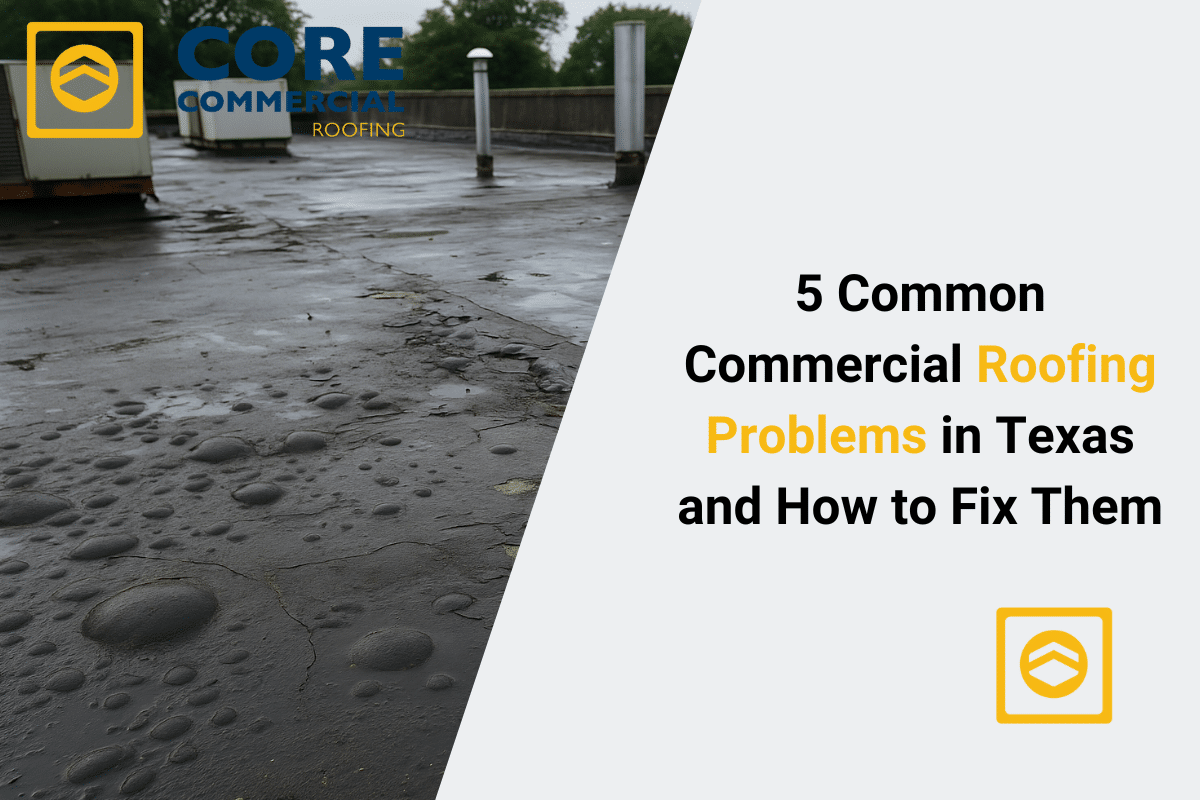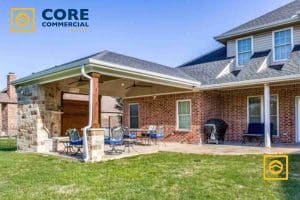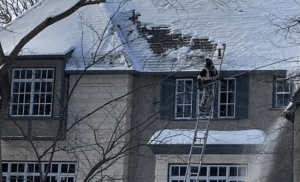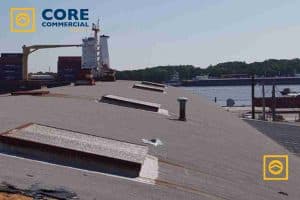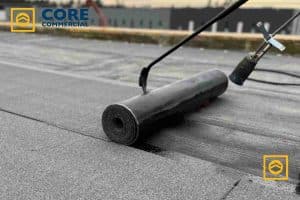Owning or managing a commercial building in Texas comes with a unique set of roofing challenges. Texas roofs face more than their fair share of abuse, from blistering summer heat and violent storms to aging materials and poor drainage. If you’re responsible for maintaining a commercial property, ignoring small roofing issues today can lead to major repair bills—or even business disruptions—tomorrow.
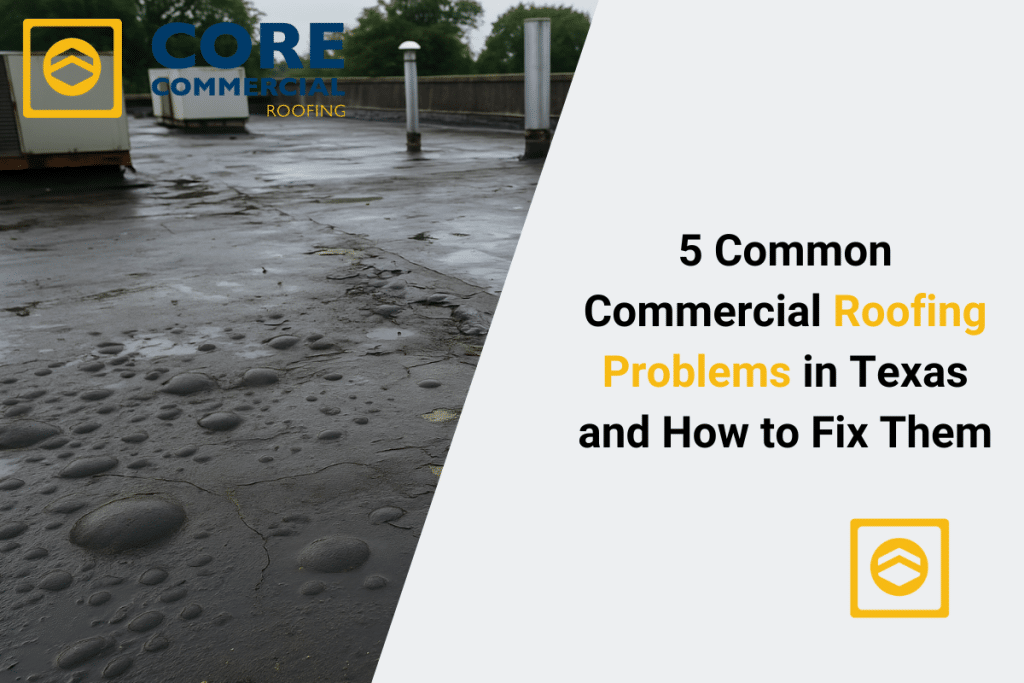
This article breaks down the five most common commercial roofing problems in Texas and gives clear, effective solutions. Whether you own a warehouse in Dallas, run a storefront in Houston, or manage an office complex in Austin, you’ll learn how to spot the early warning signs, prevent expensive damage, and extend the life of your roof. We’ll focus on practical advice, not technical jargon, to help you make smart decisions and avoid costly mistakes.
Table of Contents
1. Storm and Hail Damage – A Texas Classic
Why It’s a Problem
Texas is no stranger to extreme weather. From spring hailstorms in the Hill Country to hurricane season along the Gulf Coast, commercial roofs are regularly put to the test. One of the most common and damaging problems is hail—especially large hail that punches holes in roofing materials, dislodges flashings, and damages membrane layers.
Even if hailstones don’t cause visible holes, they can still weaken the roof over time. Hail impacts can crush the surface, create hairline fractures, and allow moisture to creep in slowly, leading to hidden water damage.
Strong winds can be just as dangerous. They can rip off parts of the roof, lift seams, and expose insulation or decking to rain and debris.
How to Spot It
- Dents or bruises on the roof surface
- Cracked or missing shingles or panels
- Loose flashing around vents or edges
- Sudden indoor leaks after a storm
- Granule loss on asphalt roofing
- Debris buildup in roof drains
How to Fix It
Start with a professional inspection right after any major weather event. A trained eye can spot storm damage that most people would miss. If you catch it early, repairs might be as simple as patching or sealing the affected areas.
If the damage is widespread, especially in older roofs, it might be time for a partial or full replacement. In Texas, some insurance policies cover storm-related roof damage, so be sure to review your coverage.
How to Prevent It
- Schedule annual roof inspections before and after storm seasons.
- Choose hail-resistant materials like modified bitumen or TPO with reinforced membranes.
- Install wind-rated edge flashing and perimeter systems.
- Keep a roof maintenance log with photos for future insurance claims.
2. Poor Drainage – Flat Roofs and Heavy Rains Don’t Mix
Why It’s a Problem
Many commercial buildings in Texas use flat or low-slope roofs. While they look clean and modern, they often struggle with proper drainage, especially when the gutters or internal drains get clogged with leaves, dirt, or roofing debris.
When water pools on a roof, it doesn’t just sit there. It slowly breaks down the roofing material, seeps through weak spots, and puts stress on seams. Over time, that leads to leaks, mold, and in worst cases—roof collapse.
In cities like Houston and Dallas, where downpours can dump several inches of rain in a matter of hours, drainage issues are a huge risk for commercial properties.
How to Spot It
- Standing water after 48 hours with no rain
- Overflowing downspouts or internal drains
- Water stains on ceilings or walls
- Sagging areas or bubbles on the roof surface
How to Fix It
Clear your drainage system of any blockages. For flat roofs, check that internal drains aren’t clogged and that scuppers are working properly. If your roof doesn’t drain well by design, consider adding tapered insulation to create better slopes.
You may also need to add more drains, increase gutter size, or upgrade to wider downspouts that handle Texas-sized storms.
How to Prevent It
- Schedule regular cleanings of roof drains and gutters—especially before storm season.
- Use drain guards to keep debris out.
- Make sure your roof has proper slope (1/4″ per foot is standard).
- Inspect after every big storm to clear obstructions early.
3. UV and Heat Damage – The Texas Sun is Relentless
Why It’s a Problem
Commercial roofs in Texas absorb intense solar radiation for most of the year. In areas like El Paso, Laredo, or even suburban Dallas, roof surface temperatures can exceed 150°F in summer.
This brutal heat breaks down roofing materials over time. Membranes dry out, adhesives lose their grip, and coatings start to crack. That leads to brittle surfaces, shrinking seams, and more vulnerability to water intrusion.
UV rays are also responsible for fading, blistering, and material breakdown—especially on older roofs that haven’t been treated or coated in years.
How to Spot It
- Faded or discolored roofing material
- Cracks or splits in membrane or coating
- Blistering or bubbling on the surface
- Dry, brittle feel to the roofing material
- Shrunken seams or curling edges
How to Fix It
If the damage is mild, a UV-reflective roof coating can help restore some protection. For more advanced wear, you may need to patch or replace parts of the membrane, especially around seams and penetrations.
In more severe cases—especially on aging roofs—re-roofing with a heat-resistant material like TPO, PVC, or spray foam might be the best long-term solution.
How to Prevent It
- Install UV-reflective roof coatings every few years.
- Use white or light-colored roofing systems that reflect heat.
- Schedule annual inspections for heat-related cracking or shrinkage.
- Consider spray foam or silicone coatings for high-sun areas.
4. Flashing and Sealing Failures – Tiny Gaps, Big Leaks
Why It’s a Problem
Flashings are the thin metal strips or membranes used to seal joints, corners, and edges where the roof meets walls, pipes, HVAC units, or skylights. In Texas, the constant cycle of heat expansion and contraction can loosen or crack these components over time.
Once flashing fails—even slightly—water gets in fast. And because flashing often protects vertical transitions (like walls or chimneys), the damage can extend far beyond the roof.
Seals around vents, ducts, and edges can also degrade quickly in the Texas sun, letting rain and wind work their way into your structure.
How to Spot It
- Rusted, bent, or missing flashing pieces
- Mold or stains near skylights or vents
- Water spots around HVAC equipment
- Cracks in caulking or sealant lines
How to Fix It
Damaged or missing flashing should be replaced immediately. Re-seal all critical areas with commercial-grade silicone or urethane sealant. Check that all HVAC curbs and edge joints are watertight.
In some cases, adding new metal counter flashing can provide an extra layer of long-term protection.
How to Prevent It
- Include flashing inspections in your seasonal maintenance schedule.
- Reapply sealants every 2–3 years in hot Texas regions.
- Use high-quality flashing materials rated for UV and temperature extremes.
- Train maintenance teams to recognize early flashing deterioration.
5. Neglected Maintenance – The Silent Budget Killer
Why It’s a Problem
It’s easy to forget about your roof until something goes wrong. But skipping inspections, ignoring small leaks, or delaying minor repairs almost always leads to bigger problems.
In Texas, minor issues can grow fast. A small puncture becomes a massive leak after one heavy rain. A blocked drain turns into roof ponding and interior damage. Failing to clean off debris allows mold and rot to take hold.
Many commercial property owners pay far more for emergency repairs than they would have for routine upkeep.
How to Spot It
- Patches of mold or discoloration inside the building
- Visible debris piles on the roof
- Signs of aging or cracking across materials
- Stains near skylights, vents, or walls
- No maintenance logs or recent inspection records
How to Fix It
Start with a full roof inspection and get a professional report. This will give you a clear picture of what needs to be fixed and what can wait. Then set up a recurring maintenance plan that includes debris removal, drain checks, flashing reviews, and surface inspections.
Catch problems early and budget for preventative work—it’s a lot cheaper than emergency calls.
How to Prevent It
- Schedule inspections at least twice a year (spring and fall).
- Keep a maintenance log with repair dates and photos.
- Train staff to report signs of roof trouble.
- Invest in roof monitoring systems for real-time alerts.
Final Thoughts: Protect Your Roof, Protect Your Business
Commercial roofing problems in Texas aren’t just inconvenient—they’re expensive, disruptive, and potentially dangerous. But they’re also preventable.
By staying ahead of common threats like storm damage, drainage issues, heat exposure, flashing failure, and general neglect, you can extend the life of your roof and protect your entire operation.
If you manage or own commercial property in Texas, now is the time to take action. Set up regular inspections, fix small problems quickly, and choose roofing materials designed for Texas weather.
Your roof is one of the most important investments you can make in your business. Treat it that way, and it will return the favor for years to come.
FAQs
What causes roof leaks in commercial buildings in Texas?
In Texas, roof leaks often result from hail damage, poor drainage, UV exposure, or worn-out seals. Regular inspections help catch issues early.
How to fix flat roof drainage problems in Texas?
To fix drainage issues, clean all drains and gutters regularly, and consider adding tapered insulation or extra drains to prevent water pooling.
Signs of hail damage on commercial roofs in Texas?
Look for dents, cracked surfaces, missing granules, or leaks after storms. Hail damage can be subtle, so a professional inspection is recommended.
How does the Texas sun affect commercial roofs?
The intense Texas sun can cause roofing materials to crack, shrink, or fade, leading to leaks. UV-resistant coatings can help protect your roof.
What is flashing failure on commercial roofs?
Flashing failure occurs when the metal or sealant around roof edges or vents deteriorates, allowing water to seep in. Regular maintenance can prevent this.
How often should I check my commercial roof in Texas?
It’s advisable to inspect your commercial roof at least twice a year—before and after storm season—to catch and address issues promptly.
Can UV damage cause roof leaks in Texas?
Yes, prolonged UV exposure can degrade roofing materials, leading to cracks and leaks. Applying reflective coatings can mitigate this damage.
What are common commercial roofing problems in Texas?
Common issues include leaks, poor drainage, UV damage, flashing failures, and neglect. Regular maintenance helps prevent these problems.
How to prevent commercial roof leaks in Texas?
Prevent leaks by scheduling regular inspections, maintaining drainage systems, applying protective coatings, and addressing minor issues promptly.
What are the best roofing materials for commercial buildings in Texas?
Materials like TPO, PVC, and metal roofing are durable and withstand Texas weather well. Choosing the right material depends on your specific needs.

